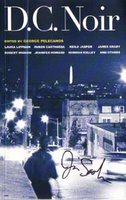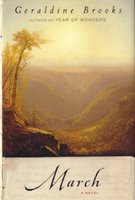 46. Digging to America, Anne Tyler. Fiction, 5-15, p. 277
46. Digging to America, Anne Tyler. Fiction, 5-15, p. 277 In the past half century, few authors have probed the pain and the pleasure of relationships or the beautiful tumult of the American family as elegantly and incisively as Anne Tyler.
She has succeeded again in her provocative 17th book, Digging to America.
Because the release of Tyler’s novel coincides with a national debate over immigration and the treatment of illegal aliens, much has been made of this book’s exploration of the assimilation of immigrants and of what it means to be and to become an American.
But the immigrant experience is secondary to Tyler’s principle thrust in this novel, which is how we forge bonds of connection between one another. The Baltimore author uses Korean orphans, Iranian immigrants and well-meaning Americans to examine the question of what constituents a family.
The book opens at the Baltimore airport where two families have eagerly gathered to await the arrival of their recently adopted Korean daughters. One of the families, Bitsy and Dave Donaldson, is “American” – their immigrant experience a part of the distant past. They are noisy, dominating and heedless; they belong here.
The second family, the Yazdans, are quiet and deferential. Sami Yazdan is American born and fully assimilated. His wife, Ziba, and mother, Maryam, are Iranian immigrants and not altogether certain about their place in American society.
At the invitation of the Donaldsons, the two families meet for a “leaf raking” party and supper. Soon, they are seeing one another regularly, notably once a year to celebrate “Arrival Day,” the anniversary of the girls’ arrival in America. “Arrival Day” is one of many ill-conceived notions of Bitsy Donaldson, who never stops to consider that to celebrate an “arrival” also serves to underscore that a person was once apart and did not belong.
As the families’ friendship develops there are the predictable, but unfortunate misunderstandings. The families’ approaches to child-rearing are poles apart. The Donaldsons retain their adopted daughter’s Korean name, dress her in traditional Korean garb and refuse to use anything but cloth diapers. The Yazdans quickly immerse their daughter in American life; they re-name her Susan, whisk her off to pre-school and dress her in blue jeans.
As the two girls age, we see how quickly children become assimilated into a foreign culture. Although, in truth, American culture is not foreign to the two Korean orphans, it is the only culture they know.
It is via the adults that we see how misunderstandings arise. There are subtle resentments. The Yazdans view the Donaldsons as too loud, too pushy, too opinionated. In particular, Maryam resents the Donaldsons eager embrace of Iranian culture, customs and food. “Americans are all larger than life,” she says. “You think that if you keep company with them you will be larger too, but then you see that they’re making you shrink; they’re expanding and edging you out.”
The Donaldsons seem largely enamored of the Yazdans because of their very foreignness, yet also silently criticize their patterns of speech or appearance.
This tension and struggle for understanding is an important part of Digging to America, but it’s not the most important part. Ultimately, the book focuses on three people, Bitsy, her father, Dave, and Maryam.
Bitsy may be Tyler’s most irritating character. She is also among her saddest. Bitsy is a clumsy, awkward woman, who has never truly fit in. It’s instructive that when Bitsy and Dave, both in their 40s, meet the Yazdans they have no close friends beyond their immediate family. Bitsy is a woman of decided opinions, which she foists on people like some women extend food or hospitality. The opinions are her defense against a world she has never been comfortable with and which has caused her pain.
Her father, Dave, is a rumpled, well-intentioned man, who finds himself at loose ends upon the death of his wife. Maryam is a reserved woman who has never felt at quite at home either in her native Iran or in America. She severely limits her friends and is most contented in her moments alone.
A romance blooms between Maryam and Dave, but falters after an unfortunate proposal.
In the interchange between these three characters Tyler explores the question of what it means to develop a relationship with another person, to “assimilate” that person into one’s life. Such assimilation is a universal part of the human experience. It comes naturally to so many, but others—like Bitsy—struggle for understanding and acceptance.
In the culminating moments of Digging to America, the walls come down and three people recognize their mutual need, love and affection for one another. As with the mysterious Borg in the Star Trek series, assimilation has begun.
 49. The Whistling Season, Ivan Doig. Fiction, 5-25, p. 345
49. The Whistling Season, Ivan Doig. Fiction, 5-25, p. 345 






